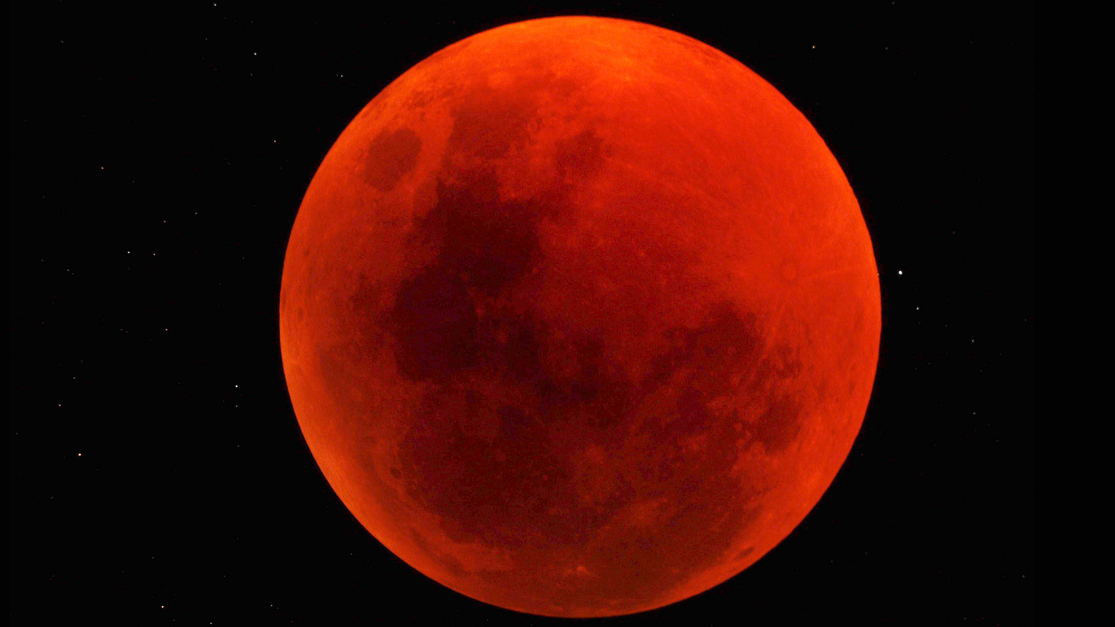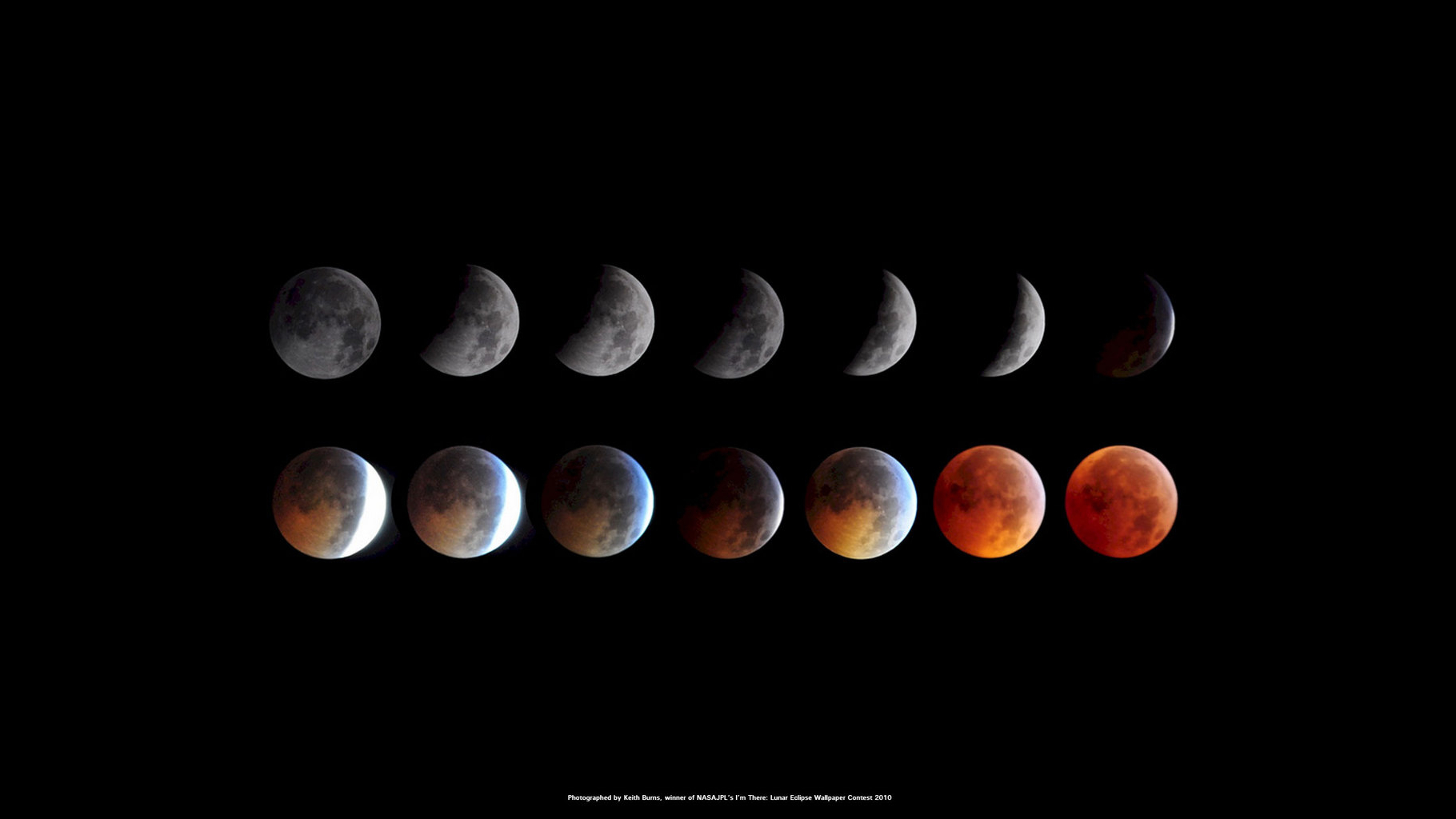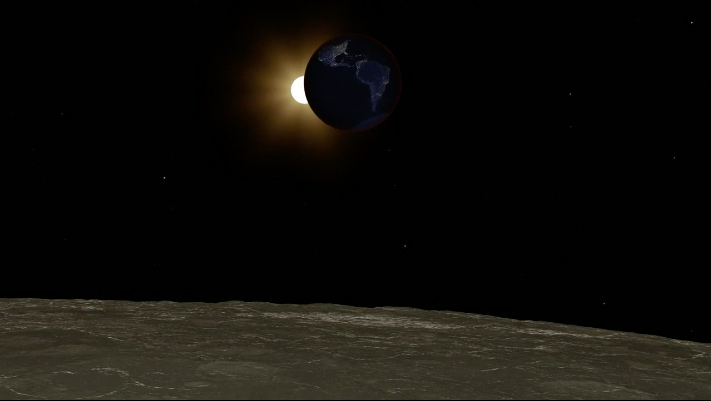A lunar eclipse occurs when Earth aligns between the sun and the moon and casts a shadow across the lunar surface. A lunar eclipse only occurs during a full moon. Lunar eclipses can last as long as six hours, according to the European Space Agency (ESA).
There are three types of lunar eclipses depending on how the sun, Earth and moon are aligned at the time of the eclipse.
- Total lunar eclipse
- Partial lunar eclipse
- Penumbral lunar eclipse
2022 will see two total lunar eclipses that will be visible in many parts of the world. The first lunar eclipse will occur on May 15-16 and the second will occur on Nov. 8. To find out when, where and how to see this year’s lunar eclipses, check out our lunar eclipse 2022 guide.
Related: How to photograph a lunar eclipse
What are lunar eclipses?
A lunar eclipse is caused by Earth blocking sunlight from reaching the moon and causing a shadow across the lunar surface. The sun-blocking Earth casts two shadows that fall on the moon during a lunar eclipse: The umbra is a full, dark shadow, and the penumbra is a partial outer shadow.
According to TimeandDate.com, a total lunar eclipse has seven stages:
- Penumbral eclipse begins: This first stage is not that noticeable to the naked eye and occurs when the penumbral shadow begins to move across the moon.
- Partial eclipse begins: The umbra begins to cover the moon. This is usually the first part of the eclipse visible to the naked eye.
- Total eclipse begins: As the umbra completely covers the lunar surface, the moon turns a blood-red color.
- Maximum eclipse: This is the stage of the eclipse with maximum coverage of the lunar surface by Earth’s umbra.
- Total eclipse ends: Earth’s umbra begins to move away from the lunar surface as the eclipse begins to wrap up.
- Partial eclipse ends: Earth’s umbra leaves the lunar surface.
- Penumbral eclipse ends: Earth’s shadow is no longer cast across the lunar surface.
During a partial lunar eclipse, only part of the moon enters Earth’s shadow, which may look like it is taking a “bite” out of the lunar surface. Earth’s shadow will appear dark on the side of the moon facing Earth. How much of a “bite” we see depends on how the sun, Earth and moon align, according to NASA.
Why is the moon red during an eclipse?

During a total lunar eclipse, the lunar surface turns a rusty red color, earning the nickname “blood moon”.
The eerie red appearance is caused by sunlight interacting with Earth’s atmosphere.
When sunlight reaches Earth, our atmosphere scatters and filters different wavelengths. Shorter wavelengths such as blue light are scattered outward, while longer wavelengths like red are bent — or refracted — into Earth’s umbra, according to the Natural History Museum. When the moon passes through Earth’s umbra during a total lunar eclipse, the red light reflects off the lunar surface, giving the moon its blood-red appearance.
“How gold, orange, or red the moon appears during a total lunar eclipse depends on how much dust, water, and other particles are in Earth’s atmosphere” according to NASA scientists. Other atmospheric factors such as temperature and humidity also affect the moon’s appearance during a lunar eclipse.
How often do lunar eclipses occur?
In astronomical terms, a lunar eclipse is a relatively common phenomenon, with about three lunar eclipses occurring every year, according to the National History Museum. Approximately 29% of lunar eclipses are total lunar eclipses, according to TimeandDate.com.
Lunar eclipses are more easily observed than solar eclipses, as they can be viewed with the unaided eye by any observer situated where the moon is above the horizon. As such, a total eclipse can be seen from any given location — on average — once every 2.5 years. (Reminder: Never look directly at the sun, even during a total solar eclipse, without protection such as verified eclipse glasses; serious and permanent eye damage can result.)
How to watch a lunar eclipse

Lunar eclipses are among the easiest skywatching events to observe.
To watch one, you simply go out, look up and enjoy. You don’t need a telescope or any other special equipment. However, binoculars or a small telescope will bring out details on the lunar surface — moonwatching is as interesting during an eclipse as it is at any other time. If the eclipse occurs during winter, bundle up if you plan to be out for the duration — an eclipse can take a couple of hours to unfold. Bring warm drinks and blankets or chairs for comfort.
Scientists like to watch lunar eclipses, too.
“We can get really good science out of what happens to the surface of the moon during total lunar eclipses, but again, the cool thing is that the moon changes color,” Noah Petro, a research scientist at NASA’s Goddard Space Flight Center in Maryland, told Space.com. “It’s something fun to see — it’s benign, but it’s a change. And anytime we see [a] change in the skies, it’s always kind of exciting.”
If you hope to snap a photo of a lunar eclipse, here’s our guide on how to photograph the moon with a camera. And if you need imaging equipment, our best cameras for astrophotography and best lenses for astrophotography have recommendations to make sure you’re ready for the next eclipse.

Additional resources
Learn more about lunar phases and eclipses with NASA Science. Explore Hanwell Community Observatory’s fact sheet for more lunar eclipse information. Discover why we don’t have a lunar eclipse every month with the Rice Space Institute at Rice University.
Bibliography
NASA. Blood Red Moon: Total Lunar Eclipse. NASA. Retrieved May 10, 2022,
O’Callaghan, J. (2019, July 16). Lunar eclipse guide: What they are, when to see them and where. Natural History Museum. Retrieved May 10, 2022.
NASA. (2017, May 3). What is an Eclipse? NASA. Retrieved May 10, 2022.
Hocken, V., Kher, A. Total Lunar Eclipse. timeanddate.com. Retrieved May 10, 2022.

